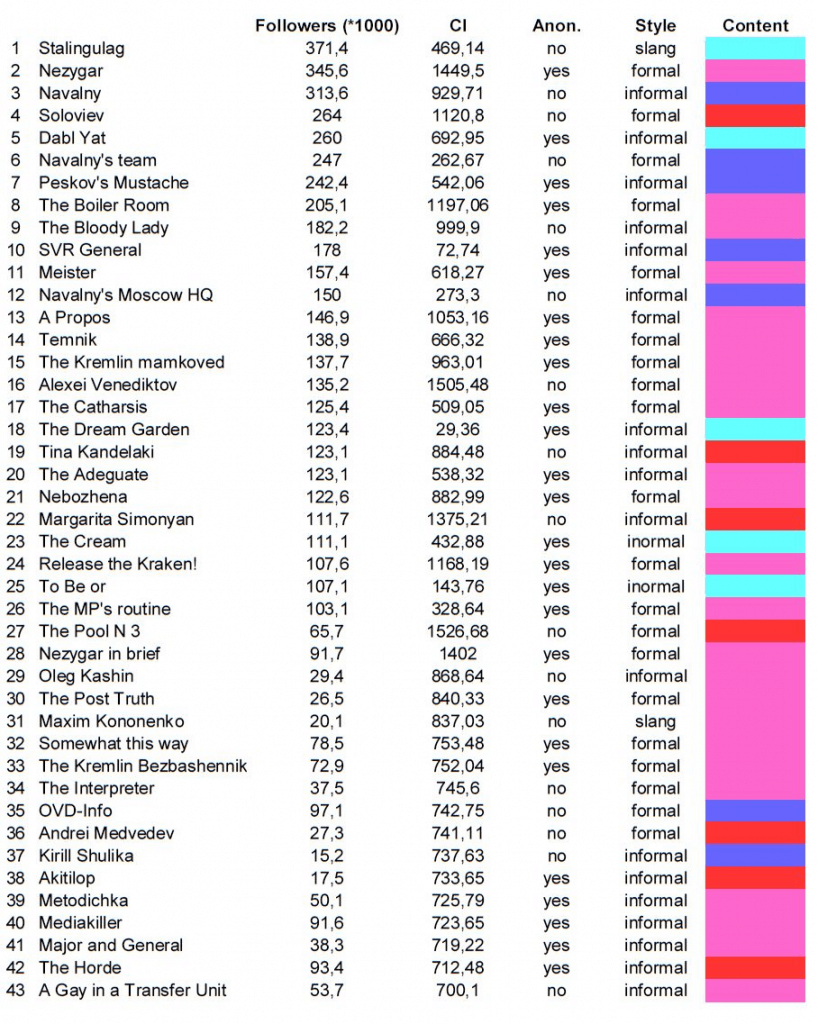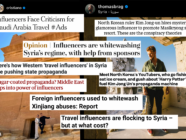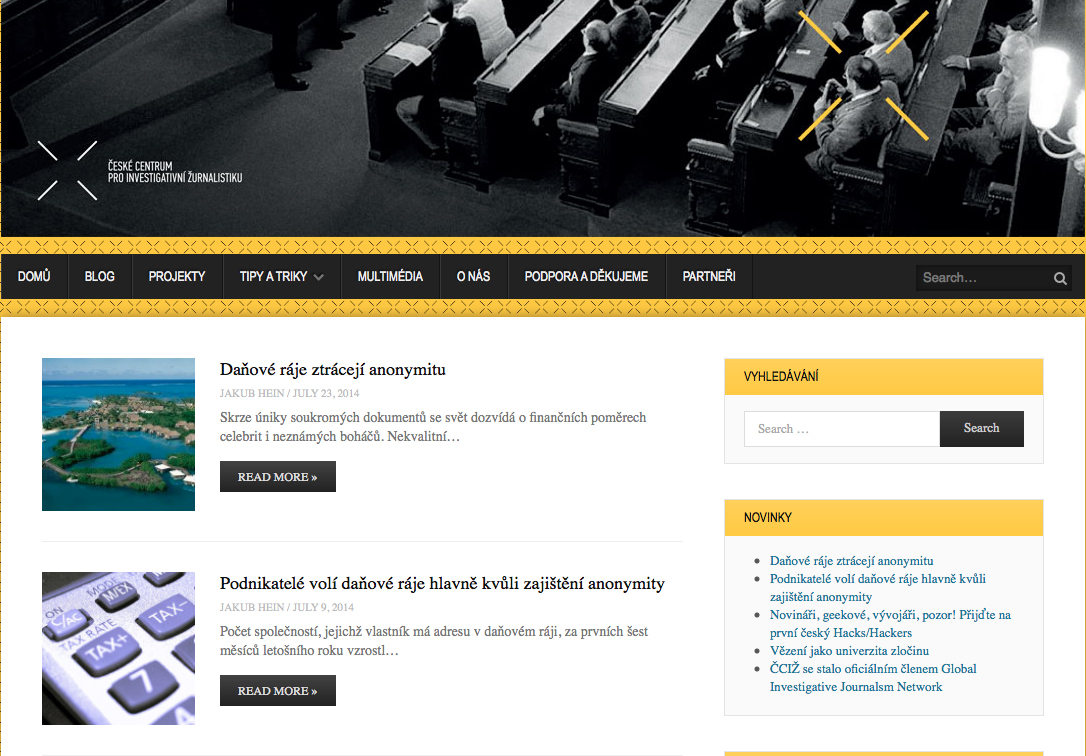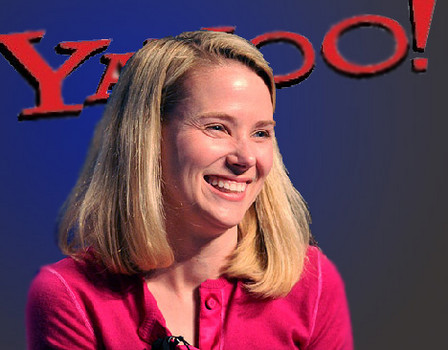Telegram is known in the world mostly as a web messenger, a minor rival of WhatsApp. It was created by Pavel Durov (who had been also developer and owner of Vkontakte, the biggest Russian social network; it is quite common in national media to compare him with Mark Zuckerberg). In 2014 Telegram became available in App Store and Google Play and was immediately downloaded by a huge number of users.
The biggest demand was in Iran where Telegram didn’t have competitors due to state bans of the latter. The new messenger hit unbelievable numbers (30-40 million of downloads) in several months. Telegram had also big success in Iraq, Uzbekistan, Kazakhstan and some other countries in Central Asia and Middle East. In Russia the market was dominated by WhatsApp and Viber but Telegram managed to get two million users by the beginning of 2016 and then to triple this number by the beginning of 2017. Since then Telegram never left the list of top online communication apps in Russia.
Telegram channels as a new genre of web media
In the middle of 2015 Telegram presented the “Channel” feature. Technically a channel is a kind of message board that can be created by any single Telegram user. Other users can follow his/her updates but, as a rule, can’t comment them.
Very soon there was registered an amazingly disproportional demand for Telegram channels in Russia. According to Tgstat.com, in 2018 there were 57.7 thousand of various channels in Russian language. Those channels produced 27.7 million of postings with 52.6 billion of page views. More than 60% of all channels in Tgstat.com database were Russian and only 25% were Iranian, in spite of the opposite difference in total number of users. Recently there was also detected a significant rise of Telegram channels in other countries. When Facebook and Twitter started to ban pro-Trumpian activists in the USA, some of them made attempts to transfer their online presence to Telegram. “Verified” Telegram channel of Donald Trump Jr. has 1,024 million followers so far (as of July 27, 2021).
Thus, in Russia Telegram channels have become specifically important and, indeed, have given life to a new genre of web media. In 2021, this genre has a history of several years and this is a vast area for researchers. Top Russian Telegram channels have hundreds of thousands of followers and cover all sorts of news and related analytics. Politics is by far overrepresented among them, if compared with not only traditional media but also with Facebook or other social networks. The most trivial explanation of this fact is anonymity of Telegram channels that makes them virtually free of all kinds of censorship. For the same reason Telegram is also the main source of fake news. Nevertheless, many channels possess a sort of seductive fascination for politically engaged Runet (Russian web space) users and, therefore, they have rising influence on the society.
This essay aims to examine the main tendencies in the development of political Telegram channels of Russian origin.
Theoretical framework: Telegram channels as alternative media
Common definitions of alternative media naturally oppose them to mainstream. Therefore, they are often seen as “counter-hegemonic”, in line with Gramsci’s theory (Atton, 2002). Significant is also Noam Chomsky’s vision of mainstream media as powerful corporations interacting with governments and other corporations (Chomsky, 1997).
Later development of alternative media theory (Bailey, Cammaerts & Carpentier, 2007; Carpentier, 2008) emphasizes on four various features of alternative media:
- serving the community;
- an alternative to mainstream;
- part of civil society;
- rhizomatic nature.
With reference to this classification, Telegram channels can be clearly identified as alternative media. Because:
- hundreds of Telegram channels serve various communities (topical or localized geographically);
- they definitely oppose mainstream media in many ways (discourse, format, genre etc.);
- pro-democratic agenda has been developed and spread through Telegram channels and in Telegram channels;
- the rhizome concept is fully applicable to the nature of Telegram channels.
Hence, there is no surprise that first academic attempts to conceptualize this new sort of media tended to identify them mainly as a new technological tool for those who oppose authoritarian regimes (Kirillov, 2018; Akbari & Gabdulhakov, 2019).
This approach can be illustrated with a very impressive recent example of NEXTA channel which was originally created for coordination of street protests in Belarus in 2020. In few weeks it rocketed to the top rankings with more than 2 million followers (as of August, 2020) and by this parameter it became clear #1 web political media in Russian language in the world.
However, Russian Telegram channels are not necessarily dominated by alternative opinion leaders (like Alexei Navalny). Evidently, there is heavy presence of the state propaganda in Telegram channels. They are also used by the establishment for internal political communication (Salikov, 2019). To observe the related details might be relevant for further conceptualization of alternative media.
Telegram channels in Russian media and political context
By the beginning of 2018 Telegram channels became an important part of Russian web. One of clear evidences of this fact was a notorious attempt to ban Telegram, undertaken by the authorities in 2018. However, after a series of technical failures, the ban was officially canceled in 2020.
Telegram channels were immediately noticed by top bloggers of Russian social web. They tried to promote their mirror accounts in this new niche. However, quite soon there appeared those who had focused just on Telegram.
The clear leader of its political segment was “Nezygar” (created on Oct 30, 2015), an anonymous author who provided sarcastic and witty daily comments regarding the national agenda, often demonstrating a deep insider’s knowledge of its backstage. The name itself had a peculiar ambition: it literally meant “not Zygar”, in opposition to Mikhail Zygar, a popular journalist who had written a bestseller book about Putin and his system of power, widely recognized also in academia (Zygar, 2016).
Thus the anonymous author implied that he/she had a more detailed and profound understanding of Russian political realities and, in general, the audience concurred with this implication. In few months “Nezygar” became a clear leader of the new format, it was cited in every second political blog (#1 in overall top list by citation index in 2018). The mystery of his/her personality became a trendy topic in public discussions and there appeared a bunch of imitations.
Telegram channels as a fresh start for Kremlin
Important is that the rise of Telegram was simultaneous with curtailing of the remains of Russian democracy. After suppression of important protests in 2011-13 Putin started his Crimean adventure and managed to consolidate a vast support based on post-imperial hysteria. With regards to alternative media context, it also implied a significant change. In previous years the Kremlin was strong enough to contain the protests but at the same time it had never managed to impose its hegemony in new media.
Most of trendsetters popped up in social networks, from Livejournal and Vkontakte to Facebook, Youtube and Twitter. The majority of those Web 2.0 opinion makers somehow leaned to oppose the regime. Telegram, as a new Internet ecosystem, was supposed to continue this tendency by default. Moreover, its founder Durov was in a direct conflict with the authorities who had forced him to sell his share in Vkontakte and to leave the country.
Nevertheless, Russian Telegram channels didn’t become neither terrain for new intellectual Fronde nor organizational tool for street protests. In part, it was caused by general decline of the opposition but there were also other important reasons.
Since the suppression of the protests in 2011-12 the Kremlin paid more and more attention to information wars. The meme of the “fur revolution” (presuming it was an uprising of wealthy Moscow middle class which had nothing to do with the real interests of “the people” all over Russia) was one of important propaganda key points. Since then the regime invested a lot in development of fake news technology (also useful for external expansion) and in creation of new post-imperial narrative.
At this point arrival and fast growth of Telegram was an opportunity for those who was eager to meet this demand of the Kremlin. It was kind of tabula rasa, an ideal environment for a fresh start. Opposition stars like Alexei Navalny had to compete with a number of teams who obtained some significant financial support from the state and who definitely had spirit and certain abilities.
Review of top Russian political channels
My sample (see Table 1) consists of 43 Russian Telegram channels which matched at least one of two selected criteria: more than 100,000 followers or more than 700 citation index (as of 01 Feb, 2021), according to tgstat.com.
Legend for color codes:
blue – clear opposition; light blue – more like opposition; magenta – more likely pro-Kremlin; red – openly pro-Kremlin
Overall review of the sample clearly reveals that pro-Kremlin contents prevails in the chart. Only 12 of 43 top political Telegram channels express alternative views. The rest, more or less, express the interests of the ruling establishment. The proportion in top 10 is different due to the influence of other media: Stalingulag and Navalny gained their Internet popularity beyond Telegram (mostly on Twitter and YouTube) from where they dragged a bigger share of their followers. If we consider purely Telegram media only, the top one would be “Nezygar”, both by number of followers and by citation index.
Typically, the majority of channels in the sample are anonymous: 26 of 43, or more than 60 %. In opposition to stereotypes, only two of them use slang vocabulary. Unexpectedly high is the share of channels leaning to use quite formal style of their content: 20 of 43 or almost one half.
It is possible to distinguish in the sample a group of anonymous channels with some fancy names (The Boiler room, Somewhat this way, The Catharsis etc.) covering news and sometimes providing commentary in a formal style. They usually stick to the same agenda and, moreover, every now and then they cross refer each other encouraging the followers interchange.
These channels are produced by small groups of professionals acting like tiny virtual newsrooms/webzines on daily basis. They are small clones of “Nezygar” and, as a rule, they are financially supported by various divisions in Putin’s administration (widely known as AP). There are two main goals of these investments: money laundering and bureaucracy wars.
Anonymity enables byzantinism of all sorts
Technical design of Telegram channels is quite suitable for activities of the kind. Anonymity and, in particular, absence of commenting feature facilitated a lot construction of fake identities and fake news. At a stock price of sim cards enterprising PR agencies created thousands of subscribers. Plus, unlike on Facebook, they didn’t have to bother about empty profiles, verification of accounts etc. For the same reason it was also a handy product for corruption schemes, so characteristic for Putin’s Russia. According to one of my respondents, up to 80 % of marketing budgets in Telegram pro-Kremlin propaganda projects (which were typically in cash) ended in the pockets of managers from both customer and contractor sides.
Besides money issues, leaks and rumors are very important. Telegram with its anonymity enables byzantinism of all possible sorts and this is a peculiar hallmark of entire Russian Telegram ecosystem.
Clones of “Nezygar” exist in every Russian region. They reflect and provoke minor intrigues inside the governors‘ offices and other infrastructure related to Putin’s “vertical of power”. Usually these channels have hundreds and maybe thousands of subscribers but they cover news and scandals where acting characters are familiar to a very limited number of persons. This is another typical trait of this class of Telegram channels: what makes them important is their privileged audience. Many top officials are eager to follow the channels directly (and not to get daily “media reviews” made by their assistants) because they appreciate very informal, sometimes even obscene style of the news and stories. Besides, the outlook of the messenger newsfeed in a mobile phone is very simple and doesn’t require any special abilities to navigate through a multilevel content structure of webzines and news portals.
Similar usage of Telegram channels by the national establishments takes place in several post-Soviet countries in spite of obvious difference among them (like between Russia and Ukraine). Besides Russia, this phenomenon is particularly important in Kazakhstan, Uzbekistan and Ukraine.
Conclusion
Telegram channels are a specific contemporary form of alternative media. Their fast growth caused consequences that seem paradoxical if we try to evaluate them using the existing patterns of alternative media theory. In particular, as shown in this study, the recent Russian political reality provides us with evidences of massive and heterogeneous usage of Telegram channels by the establishment.
This phenomenon doesn’t perfectly match earlier models suggested by Chomsky and especially by Atton who was concentrated mostly on counter-hegemonic role of alternative media. Russian media scene gives us an example of systemic and growing implementation of alternative media by the ruling class. Hypothetically, it is possible to suggest that ultramodern kinds of alternative media tend to become a part of mainstream. And possibly even to replace what we used to consider “big media”. Especially after further technical advances that would definitely happen with the spread of 5G.
However, a single Russian case can hardly be sufficient for generalization. This phenomenon still needs further research and comparative analysis.
Tags:internet, Politics, Russia, social media, Telegram



















